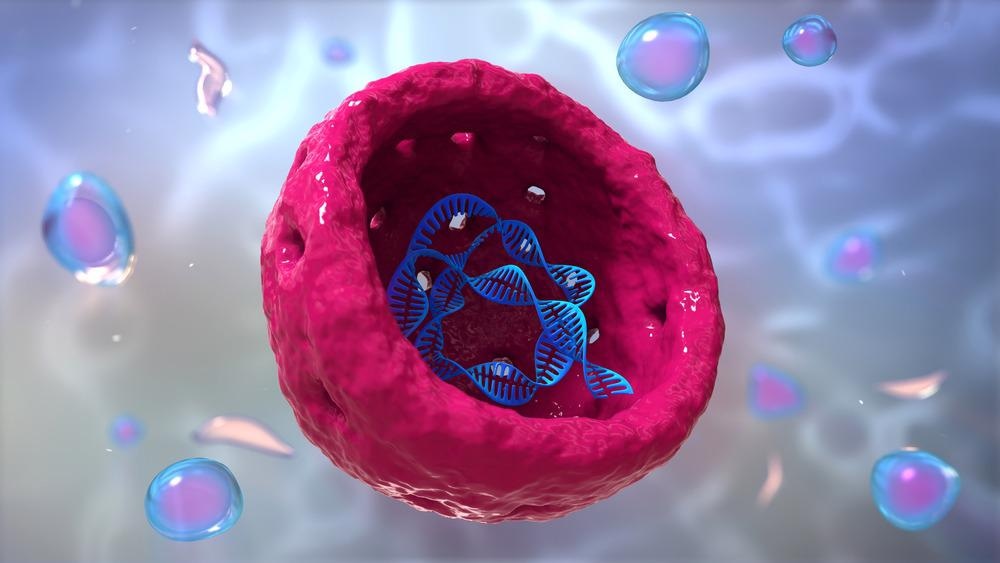In an article recently published in the journal Applied Surface Science, the researchers synthesized green fluorescent carbon dots (G-CDs) from 3,5-diaminobenzoic acid and citric acid. The as-prepared G-CDs were used to target the nucleolus and to carry exogenous DNA molecules into the nucleolus. In addition, the carbon dots (CDs) were used to monitor the levels of nitrite ions (NO2-) and pH in biological cells.

Study: Fluorescent carbon dots with real-time nucleolus-monitoring capability for gene delivery and biosensing of NO2– and pH. Image Credit: urfin/Shutterstock.com
Role of Nucleolus, NO2- and pH in Living Cells
CDs are carbon nanomaterials considered quasispherical particles with a size of fewer than 10 nanometers. Due to their advantages, including outstanding photostability, superior photoluminescence, excellent biocompatibility low toxicity, and easy functionalization, CDs are extensively applied in biological sensing, cell imaging, gene delivery, catalysis, and fingerprints detection.
The nucleolus is located inside the nucleus and it is the site for processing ribosomal RNA (rRNA) transcripts, ribosomal DNA transcription by RNA polymerase I, and ribosome assembly. Monitoring the state of the nucleolus is critical for detecting malignant lesions and developing accurate treatment.
Although CDs were recently applied as fluorescent (FL) labeling reagents for nucleolus staining, their research application as nucleolus-targeted probes is practically unexplored.
Many human diseases are caused by genetic changes inside the nucleolus. Thus, transmitting normal genes with therapeutic efficacy into the nucleolus can exert a therapeutic role or correct gene defects. However, the internalization of naked genetic materials by target cells may be hampered due to phagocyte uptake, susceptibility to serum nuclease, or rapid renal clearance. To this end, various vectors were developed to introduce the gene into the nucleolus. However, these vectors have limitations like high toxicity and low transfection efficiency.
NO2- is used as a preservative in the food industry. Although a moderate amount of NO2- is beneficial to human health, excess presence could convert hemoglobin into methemoglobin in human blood, which may cause hypoxia and interact with secondary amines and amides present in the stomach to produce nitrosamine and may induce cancer and hypertension. Thus, detection of NO2- is critical for disease diagnosis. Similarly, pH plays a vital role in physiological processes, and irregular pH changes lead to various diseases. Measuring intracellular pH is also crucial for disease diagnosis.
G-CDs for Nucleolus Targeting, Gene Delivery, and Biosensing of NO2– and pH
In the present study, the researchers synthesized G-CDs from citric acid and 3,5-diaminobenzoic acid via a single-step hydrothermal method. As-prepared G-CDs showed excellent biocompatibility and low toxicity. The G-CDs were applied to the target nucleolus based on G-CD’s DNA-sensitive properties to carry the exogenous DNA into the nucleolus. Moreover, the G-CDs were used to monitor NO2- and pH in a biological cell.
Research Findings
Transmission electron microscope (TEM) images demonstrated G-CDs’ quasi-spherical structure with favorable dispersion and size distribution in the scope of 1-5 nanometers with an average size of 2.16 ± 0.52 nanometers. Atomic force microscopy revealed that G-CDs’ height range was between 5.2 and 5.1 nanometers.
Fourier transform infrared (FTIR) spectrum and X-ray diffraction patterns inferred the composition and functional groups. G-CD’s XRD pattern showed three characteristic peaks at 281.9, 396.9, and 528.8 electronvolts corresponding to C1s, N1s, and O1s, respectively.
The C1s spectrum illustrated four peaks corroborating the existence of the following bonds, carbon-carbon double (C=C, 284.8 electronvolts), carbon-nitrogen (C-N, 286 electronvolts), acetyl (O=C–C, 287.8 electronvolts) and carbonyl (C=O, 288.9 electronvolts). N1s spectrum decomposed into three peaks corresponding to carbon-nitrogen-carbon (C-N-C, 398.8 electronvolts) and nitrogen-hydrogen (N-H, 400.1 electronvolts). O1s spectrum also decomposed into three peaks of C=O (531.8 electronvolts) and carbon-hydroxyl (C-OH, 533.2 electronvolts), and ether (C-O-C, 533.9 electronvolts)
FTIR spectrum showed absorption bands for N–H and C–H at 2927.3 and 2579.3-centimeter inverse, respectively. The peak at 1690.9-centimeter inverse corroborated the existence of the C=O functional group, those at 1593.9 and 1464.4-centimeter inverse COO– group. Moreover, the peaks at 1394.7, 1334.8, 1210.5, and 1121.1-centimeter inverse correspond to C–H bending vibration, C-N stretching vibrations, O-H and C–O bond, respectively.
G-CD’s complex efficiency for DNA was investigated through an agarose gel electrophoresis assay by observing the movement of DNA. The results showed that free DNA had easy migration to the opposite end, while with the increasing weight ratio of G-CD to DNA, DNA binding with G-CD was gradually blocked, and complete blockage occurred when the ratio reached 50:1. Complete blockage in DNA migration confirms the effective loading of DNA in G-CDs.
Conclusion
To conclude, the researchers used 3,5-diaminobenzoic acid and citric acid as precursors to develop G-CDs via a single-step hydrothermal reaction. The as-prepared G-CDs served the purpose of staining nucleolus, carrying exogenous DNA into nucleolus, and visually monitoring pH and NO2– variations in living cells. Additionally, the team anticipated that the proposed G-CDs were biocompatible gene carriers with low toxicity. Thus, these CDs have good prospects in gene therapy that targets nucleolus.
Reference
Qianliang Wang, Lihong Shi, Jianghong Zhao, Shaomin Shuang. (2022) Fluorescent carbon dots with real-time nucleolus-monitoring capability for gene delivery and biosensing of NO2– and pH, Applied Surface Science. https://www.sciencedirect.com/science/article/pii/S0169433222014453
Disclaimer: The views expressed here are those of the author expressed in their private capacity and do not necessarily represent the views of AZoM.com Limited T/A AZoNetwork the owner and operator of this website. This disclaimer forms part of the Terms and conditions of use of this website.